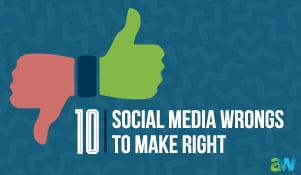When we visit a website, we’re likely to see a video, calls to action, and navigation taking us deeper inside the site. Drawing people deeper only works successfully when there’s a reason for people to click through to another page. Sometimes, though, people leave soon after they arrive. There’s a name for that, and it’s called the bounce rate.
For marketers, doesn’t matter if your focus is B2B or B2C, the bounce rate metric is really the bane of existence. Bounce rate is a measurement of the length of time a visitor stays on a single page of your website. The lower the time, the higher the bounce (as in they jumped off); the higher the time, the lower the bounce (as in they stuck around to explore your site).
How Google Measures Bounce Rate
Visits to a website are documented and their actions on the site used to calculate the percentage of users who bounce from page to page in a given time frame compared to the total number who enter each page of your site in the same time frame.
If a user lands on a single page and leaves your website from that single page without further browsing, that contributes to web page bounce rate.
In order for all of this to happen and for Google to provide your bounce rate in your Google Analytics dashboard, you must have installed the Google Analytics tracking code to the header of your website. This code is unique to your website, and it should already be on your website tracking user behavior. If you don’t have the code installed, then you'll need to set up your Google Analytics account and install the code to your website.
Can a High Bounce Rate Be Good?
Evaluating bounce rate has to take into account the type of site that has been built and the way that the site is being used. For example, if you built a landing page to sell a webinar, course or product and the user knows they want to buy what you’re offering, then they won’t be lingering or browsing through to other pages.
So, before you worry that your bounce rate is too high, you'll want to interpret bounce rate against the following factors:
1. What is the purpose of the content you built and how do you want the user to interact with that content? For example, do you have a landing page featuring convertible content on it - such as a free resource or download?If so, then visitors may come, partake of the resource, and leave.
2. What type of website do you manage? Is it full of :30 second videos (like TikTok)? If so, it’s likely that users will linger, watching a few short-form videos.
3. Quality plays a big role in bounce rate: is the quality of your web site's content great or really poor? On the flip side of that question, is the quality of the traffic coming into your site what you want it to be?
4. What industry are you in? High bounce rates in some industries are normal.
You Can Directly Impact Bounce Rate
• Having prominent calls to action (CTAs) on your landing page with high-quality purpose (to get the user to click) is the secret to controlling your bounce rate. When a user clicks a link from a traffic source, the user is expecting to find information they want.
• Building landing pages with the right headers and navigation directions helps the user determine if they want to browse deeper or leave. When you attract the right visitor, you need to fulfill your promise of offering them what they came for.
• Put yourself in your visitor’s shoes. Time is of the essence, as fewer minutes in the day are available for browsing (and companies may not allow that time for Internet surfing). Develop and publish content that is short and to the point. Short-form video, perhaps one minute in length, is appealing. Images and illustrations that tell a story help reduce time to read lengthy copy.
• Look for other ways to convert visitors to customers. How can you build more of a funnel to entice visitors to click deeper? What information do your customers like that your prospects may like even more?
Bounce rate is an important metric for evaluating the effectiveness of a website. The key is recognizing what type of bounce rate represents the achievement of your goals.







Leave a comment